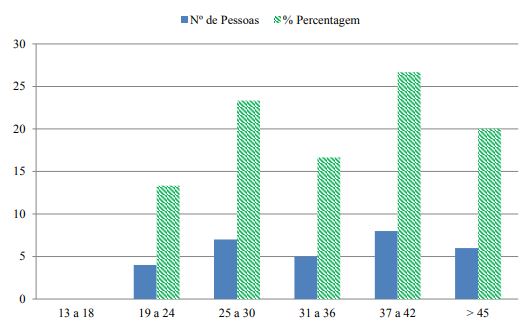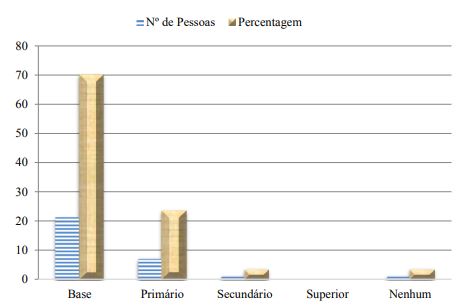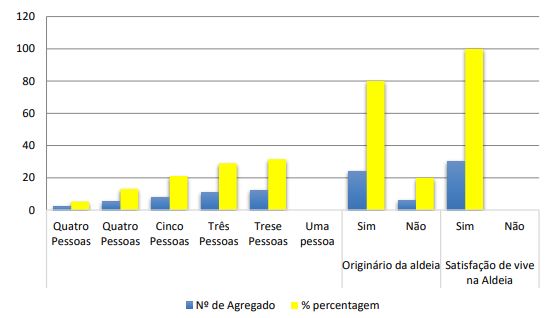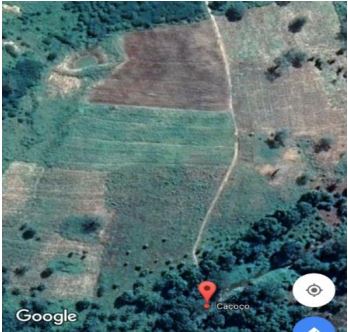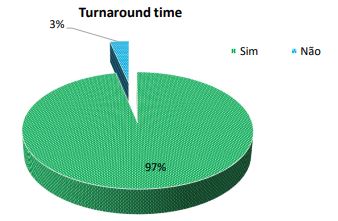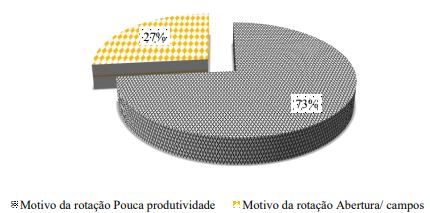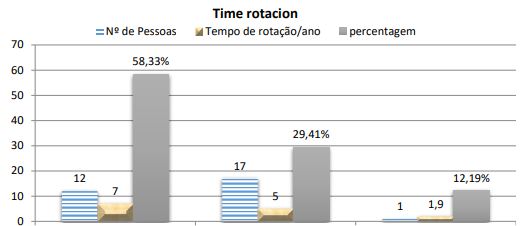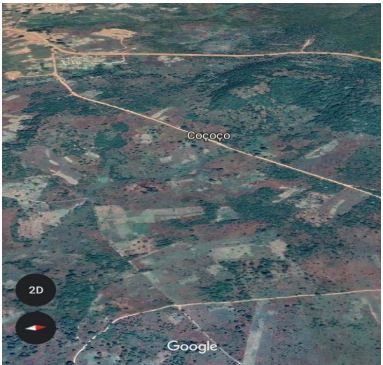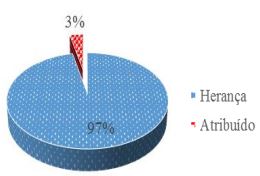ВЛИЯНИЕ ПЕРЕЛОЖНОГО ЗЕМЛЕДЕЛИЯ В ЛЕСУ МИОМБО РАЙОНА КАССОСУ, МУНИЦИПАЛИТЕТ СЕЛА
ВЛИЯНИЕ ПЕРЕЛОЖНОГО ЗЕМЛЕДЕЛИЯ В ЛЕСУ МИОМБО РАЙОНА КАССОСУ, МУНИЦИПАЛИТЕТ СЕЛА
Научная статья
Чамбинго И.Ф. 1, *, Фансони А.П. 2 , Камбута П.Дж. 3 , Кинхама В.С. 4
1, 2, 3, 4 Высший политехнический институт Южной Кванзы, Ангола
* Корреспондирующий автор (belachambingo[at]yahoo.com.br)
АннотацияТемпы обезлесения в Анголе, зарегистрированные в последние годы, достигают тревожных масштабов. В качестве основных причин выделяются различные виды и последствия антропогенной деятельности, например, пожары, сельское хозяйство, использование бытовых видов топлива и производство древесины. Целью данного исследования была оценка влияния переложного земледелия на экосистемы Миомбо в Кассосо, муниципалитет Села, провинция Куанза-Сул. То же самое происходило в период с апреля по сентябрь 2019 года. Для проведения исследования были использованы выборка по методу снежного кома, а также аналитико-синтетический, индуктивнодедуктивный, историко-логический, математический и статистический методы, включающие также методы интервью, наблюдения участников, инвентаризации и фотографии. Авторы провели 40 интервью с участниками с угольными работниками, возраст которых варьировался от 19 до 45 лет. Оценка воздействия переложного земледелия в исследуемой местности основывалась на следующих аспектах: способ открытия полей, время и причины чередования полей, форма подготовки почвы, тип сельского хозяйства, практикуемый в исследуемой местности, основные культуры и урожайность этих культур (т/га), а также тип приобретения земли. В результате исследования было выяснено, что в экосистеме Кассосо переложное земледелие оказывает негативное воздействие, поскольку поля забрасываются каждые 6-7 лет. Модель открытия шахт выполняется путем вырубки деревьев, оставляя стволы на месте повала на неопределенное время с целью разложения древесины.
Ключевые слова: воздействие, передвижное сельское хозяйство, лесопользование, Кассосо.IMPACT OF AGRICULTURE ITINERANT IN THE MIOMBO FOREST, LOCALITY OF CASSOCO, MUNICIPALITY OF CELA.
Research article
Chambingo I.F.1, *, Fançony A.P.2 , Cambuta P.J.3 , Kinhama V.C.4
1, 2, 3, 4 Instituto Superior Politécnico do Cuanza Sul, Angola
* Corresponding author (belachambingo[at]yahoo.com.br)
AbstractThe rate of deforestation registered in recent years in Angola has reached alarming proportions. The various anthropogenic practices, such as fires, agriculture, exploitation of domestic fuels and wood production are identified as the main causes. The present study aimed to evaluate the impact that shifting agriculture plays on the Miombo ecosystems of Cassoço, Municipality of Cela, province of Cuanza Sul. The same took place in the period from April to September 2019. To carry out the investigation, Snowball, analytical-synthetic, inductive-deductive, historical-logical, mathematical and statistical methods were used, combining the techniques of interview, observation participant, inventory and photographs. The researchers carried out 40 interview to participants with pleasant and charcoal workers whose age ranged from 19 to 45 years old. The assessment of the impact of shifting agriculture in the locality under study was based on the following aspects: Method of opening the fields, time and reasons for rotating the fields, form of soil preparation, type of agriculture practiced in the locality under study, main crops and yields of these crops t/ha and form of land acquisition. The work made it possible to know that in the Cassoço ecosystem, shifting agriculture causes a negative impact, as the fields are abandoned every 6 to 7 years. The model of opening the mines is done by felling trees with the help of sharp objects, leaving the trunks in place for an undefined time for putrefaction.
Keywords: impact, itinerant agriculture, forest management, Cassoço.
Introduction
The Angola natural forests have a very relevant roll in ecological, social and economic areas, their using depend from region to region ethno linguistic groups and cultural habits.
In Angola there are several forest typologies, where the Mionbo has about 585.949 of superficies corresponding 47% of total country superficies [15].
The Mondimaio forest a kind of vegetation, characterized the floristic predominance that belong to the Brachystegia, Isoberlinia and Jubernadia gender [8]. These gender belong to Fabecea family [11] ND Caesalpinioidede [13].
Several author (for eg.: [18], [12], [8], [11]), the Angolan Miombo is divided into two (Miombo dry and wet) .The Angolan Miombo is more commune in North-center zone of country (Cuanza Norte, Malnje, Lunda Norte, Cuanza-Sul, Huambo, and Banguela), while the dry Miombo is more commune in the provinces the stays in of country (Bié, Moxico, Huila and Cuando Cubango).
The forestation rate in Angola has been floating since 1990, with drastic increasing since 2000. From 1990 to 2000, Angola has lost about 124.800 hectares of forests increasing this number 1.872.000 hectares from 2000 to 2005, mean, 3,1% of forest total area [6].
The Cuanza Sul province has 11 types of vegetal forests formation, with almost 46.754 km2 of superficies, from this space, about 34% corresponds to Miombo forest [17]. In Cela municipality, as well as all the Cuanza Sul province, the mais current forests to deforestation corresponds to the burning, opening new trenches, wood exploration and coal [1], [2], [4].
Among several Cuanza Sul municipalities with high deforestation rate because of the itinerant agriculture, are pointed the Cassongue, Cela, Quibala, Mussende and Seles municipalities. In Cassoço location is daily observed coal makers immigration coming Sanga, Pambangala (Cassongue), and Bailundo (Huambo) localities. Associated to this situation, in Cassoço locality, is observed farmers making fields rotation.
The agriculture practised in Angola Miombo as in Cassoço one, is itinerant, and it is considered as the Miombo damaging main factor, according to its expansion, there is a Miombo changing acceleration to agriculture, forestation and mining, than, it is less heard about intact Miombo, that could not be so, because only heard about rural population decreasing as well as the business, industry for urban population [9], [14], highlights that the forests degradation and Miombo forest losing it is calculated in about 250.000 and 300.000 hectares/year with Miombo vegetation.
The itinerant agriculture consists on throw to the ground part of the forest, incorrectly that sometimes do not allow the rearising of the new ones, afterword the burning of cut trees and so on. Once passed the field fertilizing time, it is abandoned because it can produce any more, looking for other field to do same process [3].
After all those thing spoke above, this work aimed to evaluate the impact of itinerant agriculture roll in Cassoço local ecosystem, in Cela municipality, Cuanza Sul Province, which will allow future studding for a sustainable forest its resource exploration from this location.
Methods
The study was realised in Cassoço quarter (coordinating 11° 33' 43"S 15° 28' 58"E), that belongs to Cela Municipality, Cuanza-Sul province. Cela is one twelve municipalities of Cuanza-Sul province with about 218.505 inhabitants, the majority are female totalizing 113.695 territorial extension of 5525 km2 and 27 inhabitants density per km2 (INE, 2014). Bordered by Quibala municipality on North, Andulo (Bié) municipality on East, by Bailundo (Huambo) municipality on South and by Cassongue, Seles and Ebo municipalities on West. It has three Districts like: the Main district, Kissanga-kungo and Sanga.
It is a descriptive research type and prospective one which researching methodology applied to get the data was the direct observation in effort to verify the used and abandoned spaces precociously that allowed to see the less present eco-types in studying area interview. For that, from April to September 2019, from 70 quarter dweller people of Cassoço aged up to 18 years old, expert in agriculture were inquired 40 dwellers selected by not probabilistic sample. The data here analysed by using Microsoft.
Results
Interviewed socio-demographic characterization
The interviewed age was divided into 6 different groups, with much more participation aged 37 to 42 years old that represent 26,67% of interviewed population, followed by 25 to 30 years old representing 23,33 %, in third position those aged by up to 45 years with 20%, population, while for those aged by 31 to 36 years old responded by about 16,67%, fifth place, the most young group runs form 19 to 24 years old and then, they represent about 13,33 % so, the 0% was given to those aged from 13 to 18 years old.
Fig. 1 – Interviewed population age group representation
Interviewed studying level
Academically, 70% Interviewed are basic (till 9th grade), and 23,33% only enrolled in primary school.
Fig. 2 – Interviewed studying level
Way of Cassoço dwellers
In this study the family aggregation varied from 5 to 7 members of the family. To the interviewed, 80% of people a native one, and only 20% emigrants, therefore this, seemed happy to live in this quarter.
Fig. 3 – Way of Cassoço dwellers
Itinerant agriculture impact evaluation
The Itinerant agriculture impact evaluation in the studying place was based in: cultivation opening way, timing and cultivation rotation reason, way of field preparation, agriculture type, main culture used and their profit t/ha and land acquisition way.
Opening fields cultivation
Mood For the Cassoço population the opening field cultivation i made by throwing down the trees using cutting objects, living the trunks in the place they have cut down by indefinite time to put it rot. Many times the tree cut down are picked up and used as firewood, or for coal production. There many farmers that open the field cultivation with fire. For FAO (2011), the Miombo neighbourhood people open the cultivation field by throwing down the trees and then they burn some native vegetable in effort to increase the extension to cultivate. 0 10 20 30 40 50 60 70 80 Base Primário Secundário Superior Nenhum Nº de Pessoas Percentagem 0 20 40 60 80 100 120 Quatro Pessoas Quatro Pessoas Cinco Pessoas Três Pessoas Trese Pessoas Uma pessoa Sim Não Sim Não Originário da aldeia Satisfação de vive na Aldeia Nº de Agregado % percentagem
Fig. 4 – the disposition of field cultivation in Cassoço quarter
Time and field cultivation rotation reason
In beginning it was verified that 97% of population uses the practicing of culture rotation (Fig. 5), but when verified the quantity of abandoned field cultivation, we concluded that they only change from culture and not make the rotation of it.
Fig. 5 – People Percent that make land rotation of Cassoço
From thirty interviewed, 97% said that they do the land rotation, and only 3% that they do not do it.
Fig. 6 – Rotation reason of cultivate field (changing)
For the Cassoço people, it’s obviously, but 73% are motivated the rotation because of unproductivity and 27% is because of opening of other fields.
Fig. 7 – Turnaround time
Fig. 8 – Larvae Opened in the last 5 years
Type of agriculture practiced in the location under study
The above data were obtained through interviews made to the residents of the cassoço, it can be observed that the type of agriculture practiced at this locality is the dry land one. Lack of financing or financial conditions may be at the base of this agricultural typology.
Form of preparing the soil
Soil preparation is done manually with the help of hoes and machetes. Many of these clean with the aid of fire, while others scrape the earth and pile up the grass (locally known as machitas), which they place along the ridge divisions, which will later serve as organic matter.
Main crops and their profitability t/ha
The data presented here were obtained through interviews carried out in addition to the use of the direct observation method.
Form of land acquisition
It was extremely important to obtain data on the form of land acquisition as the way the population uses. It is only for subsistence and because of the low production, it only serves to solve the food needs of the farmers and their families. The graph below shows that most of the cassoço population obtains their land through inheritance, as confirmed by 97% of those interviewed
Fig. 9 – Form of land acquisition
The average for each farmer is 10 fields, they are not taken care of as they should be, mainly because they use fire to clear the land, with this they burn the remains of firewood that is left on the land, pull out the stumps left from the result of felling. of trees (those that could sprout), cut down all the trees that could serve as seeds or termite preservers responsible for transforming raw material into organic, chase away all microorganisms that help in soil nutrition, with this, Itinerant Agriculture brings with it, a negative impact.
Discussion
Urso (2013) and Teixeira (2018) point out that, in the practice of agriculture, adults are most committed, as they are the ones who ensure the support of members or households.
Note that at Caçosso neighborhood there are several social problems, little economic alternative, low living standards and unemployment. The population despite being mostly native, each family has only up to 10 hectares. Santos (2013) states that in Angola, with the increase of rural and urban demography, there has been a lot of demand for services and resources offered by the Miombo forests, which causes pressure and constant change in these.
According to IFN (2010), in Angola, there is felling of anarchic trees to open new fields as well as for the exploitation of charcoal and firewood, which often do not wait at least six months for the forest to regenerate.
The results obtained indicate that 97% do rotation and only 3% do not, 58.33% say it takes seven years to rotate. Contrary data were presented by Ramos (2007), when he claims that there is no fixed time for exploration of a Miombo larvae. However, it is the cases of abandonment of the Miombo larvae indicates that it has to do with the depletion of nutrients in the soil.
According to FAO (2011), the non-use of rational agricultural techniques causes greater erosion of the land and a consequent accelerated deforestation, with this, just that there is little productivity has become a reason for opening other fields.
According to the data, it was detected that the yields for each crop per area are very low, maize is 0.8t/ha, beans 0.6t/ha, peanuts 0.7t/ha. These averages are far below the averages proposed in different literatures.
According to FAO (2011), the most cultivated products in these shifting agriculture systems are mostly corn, beans, sweet potato pumpkin, turnip, yam, radishes, among many characteristic products of each region. For Guerrero (2012), the most frequent shifting crops are: sorghum, corn, beans, peanuts, sweet potatoes, reindeer potatoes, tomatoes, peppers, onions and carrots.
Conclusion
In this locality, shifting agriculture is practiced and the fields are abandoned every 6 to 7 years, which leads to it being considered that shifting agriculture in Cassoço has a negative impact on the Miombo forest.
To mitigate the impacts, it is suggested the implementation of sustainable agricultural practices, studies of adaptable and profitable crop varieties in the edaphoclimatic conditions of the Cassoço.
Конфликт интересов Не указан.
Conflict of Interest None declared.
Список литературы / References
1. Africano, C.G. Inventário florestal na localidade do Canjombe, Município da Cela Cuanza-Sul / C.G. Africano // Trabalho de Fim de curso para obtenção de licenciatura em Agronomia no ISPKS-Angola. 2019.
2. Capuambua, T.J. Etnobotânica de plantas alimenticias ultilizadas na localidade da cumbira II-município da conda, província do cuanza-sul / T.J. Capuambua // Trabalho de fim de curso para obtenção do grau de licenciatura em agronomia ISP-KS. 2019.
3. Diniz, A. C. Características mesológicas de Angola / A. C.Diniz. 2a Ed. Lisboa: Instituto Português de Apoio ao Desenvolvimento. 2006. ISBN 972-8975-02-3.
4. Fançony, A.P. Etnobotanica sobre plantas medicinais na localidade do Jombe II, Municipio do Cuanza-Sul / A.P. Fançony, // Trabalho de Fim de curso para obtenção de licenciatura em Agronomia no ISPKS-Angola. 2017.
5. IFN. Inventário Florestal Nacional - Angola: Relatório Final. Luanda. 2010.
6. MUA. Ministério do Urbanismo e AmbientePolítica Nacional de Florestas Fauna Selvagem e áreas de Conservação, Luanda – Angola. 2008.
7. Ramos, P. Dimensões do agronegócio brasileiro: políticas, instituições e perspectivas / P. Ramos. Brasília: NEADMDA. 2007.
8. Safilipoo, M. Trinta árvores e arbustos do miombo Angolano Guía de campo para la identificação / M. Safilipoo. 2013. 74 p.
9. Santos, L. Serviços do ecossistema florestal do miombo / L. Santos // Instituto Superior de Agronomia – Lisboa. 2013.
10. Teixeira, J.V. A participação das comunidades locais na gestão das florestas em Moçambique: Caso dos distritos de Montepuez, Maúa, Marrupa e Majune Tese de Doutoramento em Geografia e Planeamento Territorial Especialidade em Ambiente e Recursos Naturais / J.V. Teixeira. 2018.
11. Urso, V. Árvores do mopane angolano / V. Urso // Guia de campo para a identificação. COSPE Firenze. 2013. 46 p.
12. Backéus, I. Tree communities and structural dynamics in Miombo (Brachystegia–Julbernardia) woodland, Tanzania / I. Backéus, B. Pettersson, L. Strömquist et al. // Forest Ecology and Management. 2006.
13. Campbell, B. M. Miombo woodlands-opportunities and barriers to sustainable forest management / B. M. Campbell, A. Angelsen, A. Cunningham et al. // CIFOR, Bogor, Indonesia. 2007.
14. Chama, L. Sustainability of techniques employed in harvesting / L. Chama, S. Siachoono, I. Christopher et al. 2016.
15. Chidumayo, E. N. Miombo ecology and management: an introduction / E. N. Chidumayo // Intermediate Technology Publications Ltd (ITP). 2011.
16. FAO. Organización de las Naciones Unidas para la Agricultura y la Alimentación. Situación de los bosques del Mundo. Roma. 2011.
17. João, E. F. Estructura y composición del bosque Miombo del sector norte de Canjombe, Kuanza-Sul / E. F. João // Tesis en opción al Título académico de máster en ciencias forestales mención: Manejo de bosques Universidad de Pinar del Río “hermanos saíz montes de oca” facultad de forestal y agronomía departamento forestal Pinar del Río. 2015.
18. Luonga, E. J. Economics of charcoal production in miombo woodlands of eastern Tanzania: some hidden costs associated with commercialization of the resources / E. J. Luonga, E. T. Witkowski, K. Balkwill, // Ecological Economics. 2002. 35 : 243-257.
Список литературы на английском языке / References in English
1. Africano, C.G. Inventário florestal na localidade do Canjombe, Município da Cela Cuanza-Sul [Forest inventory in the locality of Canjombe, Municipality of Cela Cuanza-Sul] / C.G. Africano // end of course work for obtaining a degree in Agronomy at Ispks-Angola. 2019. [in Portuguese]
2. Capuambua, T.J. Etnobotânica de plantas alimenticias ultilizadas na localidade da cumbira II-município da conda, província do cuanza-sul [Ethnobotany of ultilized food plants in the locality of cumbira II-municipality of conda, province of cuanza-sul] / T.J. Capuambua // End of course work to obtain the degree of Bachelor in agronomy ISP-KS. 2019. [in Portuguese]
3. Diniz, A. C. Características mesológicas de Angola [Mesological characteristics of Angola] / A. C.Diniz. 2nd Ed. Lisbon: Portuguese Institute for development support. 2006. ISBN 972-8975-02-3. [in Portuguese]
4. Fançony, A.P. Etnobotanica sobre plantas medicinais na localidade do Jombe II, Municipio do Cuanza-Sul [Etnobotanica about medicinal plants in the locality of Jombe II, Municipality of Cuanza-Sul] / A.P. Fançony // End of course work to obtain a degree in Agronomy at Ispks-Angola. 2017. [in Portuguese]
5. IFN. Inventário Florestal Nacional - Angola: Relatório Final [IFN. National Forest Inventory-Angola: Final Report]. Luanda. 2010. [in Portuguese]
6. MUA. Ministério do Urbanismo e AmbientePolítica Nacional de Florestas Fauna Selvagem e áreas de Conservação [MUA. Ministry of Urbanism and Environmentnational policy of Forests Wildlife and conservation areas], Luanda-Angola. 2008. [in Portuguese]
7. Ramos, P. Dimensões do agronegócio brasileiro: políticas, instituições e perspectivas [Dimensions of Brazilian agribusiness: policies, institutions and perspectives] / P. Ramos. Brasília: NEAD-MDA. 2007. [in Portuguese]
8. Safilipoo, M. Trinta árvores e arbustos do miombo Angolano Guía de campo para la identificação [Thirty Angolan miombo trees and shrubs Field Guide for identification] / M. Safilipoo. 2013. 74 p. [in Portuguese]
9. Santos, L. Serviços do ecossistema florestal do miombo [Services of the miombo forest ecosystem] / L. Santos // Instituto Superior de Agronomia – Lisboa. 2013. [in Portuguese]
10. Teixeira, J.V. A participação das comunidades locais na gestão das florestas em Moçambique: Caso dos distritos de Montepuez, Maúa, Marrupa e Majune [The participation of local communities in Forest Management in Mozambique: case of the districts of Montepuez, Maúa, Marrupa and Majune] / J.V. Teixeira. PhD thesis in geography and Territorial Planning specialty in Environment and Natural Resources. 2018. [in Portuguese]
11. Urso, V. Árvores do mopane angolano [Angolan mopane trees] / V. Urso // Guia de campo para a identificação. COSPE Firenze [Field Guide for identification. Cospe Firenze]. 2013. 46 p. [in Portuguese]
12. Backéus, I. Tree communities and structural dynamics in Miombo (Brachystegia–Julbernardia) woodland, Tanzania / I. Backéus, B. Pettersson, L. Strömquist et al. // Forest Ecology and Management. 2006.
13. Campbell, B. M. Miombo woodlands-opportunities and barriers to sustainable forest management / B. M. Campbell, A. Angelsen, A. Cunningham et al. // CIFOR, Bogor, Indonesia. 2007.
14. Chama, L. Sustainability of techniques employed in harvesting / L. Chama, S. Siachoono, I. Christopher et al. 2016.
15. Chidumayo, E. N. Miombo ecology and management: an introduction / E. N. Chidumayo // Intermediate Technology Publications Ltd (ITP). 2011.
16. FAO. Organización de las Naciones Unidas para la Agricultura y la Alimentación. Situación de los bosques del Mundo [FAO. Food and Agriculture Organization of the United Nations. Situation of the world's forests]. Rome. 2011. [in Portuguese]
17. João, E. F. Estructura y composición del bosque Miombo del sector norte de Canjombe, Kuanza-Sul [Structure and composition of the Miombo forest of the northern sector of Canjombe, Kuanza-Sul] / E. F. João // Thesis in option to the academic title of Master in Forestry Sciences mention: Forest Management University of Pinar del Río "hermanos saíz montes de oca" Faculty of Forestry and agronomy Forestry Department Pinar del Río. 2015. [in Portuguese]
18. Luonga, E. J. Economics of charcoal production in miombo woodlands of eastern Tanzania: some hidden costs associated with commercialization of the resources / E. J. Luonga, E. T. Witkowski, K. Balkwill, // Ecological Economics. 2002. 35 : 243-257.

